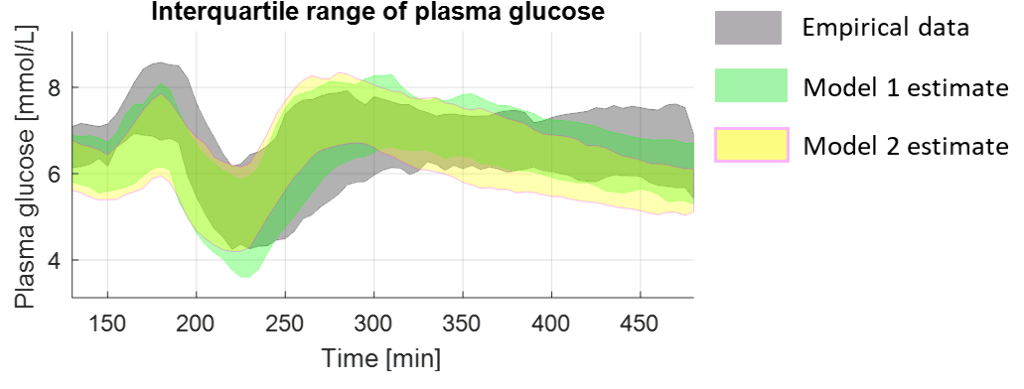Nichole S. Tyler, United States of America
Oregon Health & Science University Biomedical EngineeringPresenter of 1 Presentation
NEW PROPOSED PHYSIOLOGY MODELS THAT UTILIZE METABOLIC EXPENDITURE DATA FROM ACTIVITY SENSORS TO FORECAST CHANGES IN GLUCOSE DURING AEROBIC EXERCISE
Abstract
Background and Aims
People with type 1 diabetes can experience dramatic changes in glucose during aerobic exercise leading to hypoglycemia. Physiological models of glucose dynamics do not correctly estimate glucose changes during exercise. This project compares two candidate mathematical model structures of glucose metabolism during exercise. Both models include metabolic expenditure as an input derived from body-worn physical activity sensors.
Methods
Models were identified and evaluated using a secondary analysis of data collected from adults with T1D who participated in a glucose-tracer infusion study (n = 17, 11 F, weight 78.2 ± 11.0, TDIR 56.2 ± 12.7). After randomization into moderate intensity (40-45% V02 max) vs. high intensity (60-65% V02 max) group, participants performed in-clinic exercise on three days clamped at infusions of low (basal), medium (1.5x basal), or high (3x basal) insulin rate, and performed 45 minutes of aerobic exercise. Models of exercise impacted endogenous glucose production (EGP), and rate of glucose disposal (Rd). Model 1 was designed such that EGP and Rd from exercise were not dependent on insulin. Model 2 included both an insulin-dependent and non-insulin-dependent component of exercise-induced EGP and Rd. Parameters for Models 1 and 2 were fit using a Hamiltonian Monte-Carlo sampling scheme.
Results
Model 1 was more accurate than model 2 when evaluated across all study data (root-mean-squared error 0.71±0.20 mmol/L Vs. 1.10±0.35 mmol/L), and in estimating glucose changes during exercise (RMSE 0.97±0.77 mmol/L Vs 1.22±0.81 mmol/L).

Conclusions
Additional models will be proposed and evaluated prior to incorporation into existing virtual patient populations and model predictive control closed-loop algorithms.
